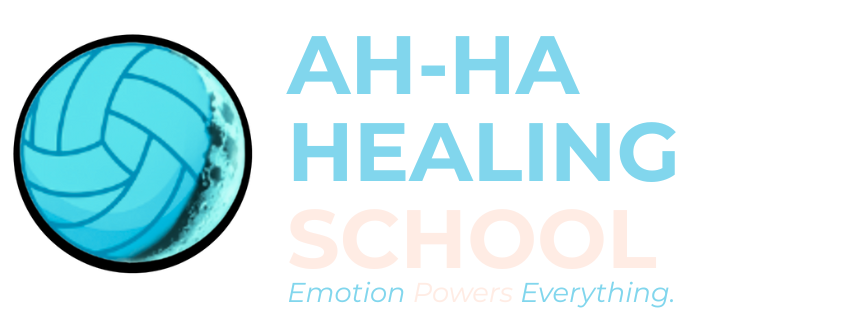
Introduction: Why Work Isn’t Working—And What We’re Missing
The modern workplace is a paradox. We have more technology, more data, and more “productivity hacks” than ever before, yet burnout is at an all-time high. According to the World Health Organization, burnout is now classified as an occupational phenomenon, with chronic stress and emotional exhaustion affecting millions worldwide.
But what if the real solution isn’t another app, perk, or time-management seminar? What if the missing ingredient is something deeper—something that addresses the root of stress, disengagement, and team dysfunction?
At AH-HA Healing, we believe the answer is emotional fitness—the science-backed ability to recognize, process, and grow from emotional pain. It’s the foundation for resilience, creativity, and true workplace wellbeing.
The Science: Emotional Intelligence, Job Satisfaction, and Team Performance
Research consistently shows that emotional intelligence (EQ) is a top predictor of workplace success. In a landmark study, Slaski & Cartwright (2002) found that employees with higher EQ experience greater job satisfaction, lower stress, and better health. Teams with high collective EQ are more creative, productive, and resilient.
Why?
Because emotional fitness empowers people to:
– Manage conflict constructively
– Stay motivated during tough times
– Adapt quickly to change
– Support and inspire one another
Yet, despite all the research, most organizations still treat emotional wellbeing as an afterthought—something to be addressed only after burnout strikes.
The Current Landscape: What’s Being Offered
Most workplace wellness programs focus on surface-level solutions:
– Meditation apps and mindfulness breaks
– Stress management workshops
– Flexible schedules and remote work options
– Employee assistance programs (EAPs)
While these are helpful, they often miss the mark. They treat the symptoms of burnout, not the root causes. They rarely address the emotional pain, unresolved conflicts, and toxic patterns that quietly erode performance and morale.
What’s Missing:
A practical, science-based system for building emotional fitness at every level of the organization.
What Is Emotional Fitness at Work?
Emotional fitness is more than just “being positive” or “staying calm under pressure.” It’s the ability to:
– Recognize and name your emotions (and those of others)
– Respond to stress and setbacks with resilience
– Communicate needs, boundaries, and feedback clearly
– Repair after conflict and grow stronger as a team
It’s about creating a culture where emotions are not a liability, but an asset—a source of insight, connection, and innovation.
Emotional Fitness vs. Traditional Wellness
– Traditional Wellness: Focuses on perks, benefits, and stress reduction techniques.
– Emotional Fitness: Builds the core skills needed to navigate change, conflict, and uncertainty—together.
The Hidden Costs: Burnout, Codependency, and Toxic Patterns
When emotional fitness is missing, workplaces fall into predictable traps:
Burnout
Chronic stress leads to exhaustion, cynicism, and a sense of ineffectiveness. Employees disengage, productivity drops, and turnover rises.
Codependency at Work
You might not hear the word “codependency” in the boardroom, but you’ll see it in action every day:
– Team members who take on others’ work to avoid conflict
– Managers who micromanage because they can’t trust their team
– Employees who need constant validation to feel “good enough”
Codependency blurs boundaries, stifles growth, and drains the team’s energy—leaving everyone exhausted and resentful.
Toxic Triangulation and Communication Breakdowns
Gossip, side-taking, and “venting” about colleagues create confusion and division. Instead of addressing issues directly, people loop in third parties, fueling drama and mistrust.
The result? Teams that should be collaborating become fractured, and the real work gets lost in the noise.
The Ripple Effect: How Emotional Fitness Drives Results
When emotional fitness is prioritized, the impact is immediate and far-reaching:
– Enhanced Focus and Resilience: Teams spend less time managing drama and more time achieving shared goals.
– Stronger Relationships: Open communication builds trust, accountability, and collaboration.
– Greater Innovation: Psychological safety allows people to take risks, share ideas, and learn from failure.
– Sustainable Success: Emotional fitness is the foundation for long-term growth and wellbeing.
The Research: Emotional Fitness and Workplace Outcomes
Slaski & Cartwright (2002) found that emotionally fit teams:
– Report higher job satisfaction
– Experience lower stress and absenteeism
– Are more adaptable to change
– Deliver better business outcomes
In today’s fast-paced, unpredictable world, emotional fitness isn’t a “nice to have”—it’s the missing link between surviving and thriving at work.
AH-HA Healing’s Approach: The Science of Emotional Pain at Work
At AH-HA Healing, we go beyond traditional wellness. Our methodology is rooted in over 30 years of research into the Science of Emotional Pain, integrating game theory and AI-driven insights to create transformational change.
Our Four-Quadrant Model for the Workplace
1. Mental:
– Uncover and reshape limiting beliefs about work, leadership, and success.
– Practice mindful attention and focus in high-pressure environments.
2. Emotional:
– Build resilience to setbacks and change.
– Cultivate self-compassion, empathy, and emotional regulation.
3. Physical:
– Recognize how stress and emotions impact the body (tension, fatigue, illness).
– Integrate movement, rest, and recovery into daily routines.
4. Spiritual:
– Connect to purpose and values at work.
– Foster a sense of belonging and authentic contribution.
What We Offer
– Custom Workplace Programs: Science-backed training for leaders and teams, tailored to your unique culture and goals.
– 7-Day Immersive Retreats: Deep-dive experiences to reset, bond, and build new skills.
– Digital Wellness Community: Ongoing support, resources, and peer learning.
– Free Guides and Tools: Practical resources to integrate emotional fitness into daily work.
Practical Tips: Building Emotional Fitness at Work
1. Normalize Emotional Conversations:
Start meetings with a quick check-in (“One word for how you’re arriving today?”) to make space for honest emotion.
2. Set Clear Boundaries and Accountability:
Clarify roles, responsibilities, and expectations. Encourage autonomy and self-motivation.
3. Practice Direct, Compassionate Communication:
Address issues directly, not through third parties. Use “I” statements and listen deeply.
4. Prioritize Emotional Recovery:
Encourage intentional breaks, debrief after stressful projects, and celebrate progress—not just outcomes.
5. Make Emotional Fitness Visible:
Share resources, stories, and learning moments. Integrate emotional fitness into daily rhythms.
Real Stories: AH-HA Healing at Work
“Our team was burned out and disconnected, but after AH-HA Healing’s program, we communicate better, trust each other more, and actually enjoy coming to work again.”
— Lynne, Director of People & Culture
“I used to dread feedback sessions. Now, I see them as opportunities to grow—and so does my team.”
— Steven, Team Lead
Call to Action
Ready to move beyond burnout and build a workplace where everyone thrives?
Explore our workplace programs, download our free guide, or book your spot at our next retreat at https://ahhahealing.com.







Emotional fitness is the wellness revolution the world has been waiting for—a vital shift beyond the limits of traditional mental health. It’s time to separate emotional fitness from outdated systems of therapeutic funding, education, and hopelessness.